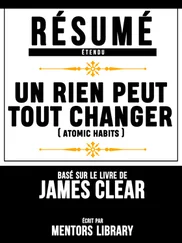There are many ways to create a commitment device. You can reduce overeating by purchasing food in individual packages rather than in bulk size. You can voluntarily ask to be added to the banned list at casinos and online poker sites to prevent future gambling sprees. I’ve even heard of athletes who have to “make weight” for a competition choosing to leave their wallets at home during the week before weigh-in so they won’t be tempted to buy fast food.
As another example, my friend and fellow habits expert Nir Eyal purchased an outlet timer, which is an adapter that he plugged in between his internet router and the power outlet. At 10 p.m. each night, the outlet timer cuts off the power to the router. When the internet goes off, everyone knows it is time to go to bed.
Commitment devices are useful because they enable you to take advantage of good intentions before you can fall victim to temptation. Whenever I’m looking to cut calories, for example, I will ask the waiter to split my meal and box half of it to go before the meal is served. If I waited until the meal came out and told myself “I’ll just eat half,” it would never work.
The key is to change the task such that it requires more work to get out of the good habit than to get started on it. If you’re feeling motivated to get in shape, schedule a yoga session and pay ahead of time. If you’re excited about the business you want to start, email an entrepreneur you respect and set up a consulting call. When the time comes to act, the only way to bail is to cancel the meeting, which requires effort and may cost money.
Commitment devices increase the odds that you’ll do the right thing in the future by making bad habits difficult in the present. However, we can do even better. We can make good habits inevitable and bad habits impossible.
HOW TO AUTOMATE A HABIT AND NEVER THINK ABOUT IT AGAIN
John Henry Patterson was born in Dayton, Ohio, in 1844. He spent his childhood doing chores on the family farm and working shifts at his father’s sawmill. After attending college at Dartmouth, Patterson returned to Ohio and opened a small supply store for coal miners.
It seemed like a good opportunity. The store faced little competition and enjoyed a steady stream of customers, but still struggled to make money. That was when Patterson discovered his employees were stealing from him.
In the mid-1800s, employee theft was a common problem. Receipts were kept in an open drawer and could easily be altered or discarded. There were no video cameras to review behavior and no software to track transactions. Unless you were willing to hover over your employees every minute of the day, or to manage all transactions yourself, it was difficult to prevent theft.
As Patterson mulled over his predicament, he came across an advertisement for a new invention called Ritty’s Incorruptible Cashier. Designed by fellow Dayton resident James Ritty, it was the first cash register. The machine automatically locked the cash and receipts inside after each transaction. Patterson bought two for fifty dollars each.
Employee theft at his store vanished overnight. In the next six months, Patterson’s business went from losing money to making $5,000 in profit—the equivalent of more than $100,000 today.
Patterson was so impressed with the machine that he changed businesses. He bought the rights to Ritty’s invention and opened the National Cash Register Company. Ten years later, National Cash Register had over one thousand employees and was on its way to becoming one of the most successful businesses of its time.
The best way to break a bad habit is to make it impractical to do. Increase the friction until you don’t even have the option to act. The brilliance of the cash register was that it automated ethical behavior by making stealing practically impossible. Rather than trying to change the employees, it made the preferred behavior automatic.
Some actions—like installing a cash register—pay off again and again. These onetime choices require a little bit of effort up front but create increasing value over time. I’m fascinated by the idea that a single choice can deliver returns again and again, and I surveyed my readers on their favorite onetime actions that lead to better long-term habits. The table on the following page shares some of the most popular answers.
I’d wager that if the average person were to simply do half of the onetime actions on this list—even if they didn’t give another thought to their habits—most would find themselves living a better life a year from now. These onetime actions are a straightforward way to employ the 3rd Law of Behavior Change. They make it easier to sleep well, eat healthy, be productive, save money, and generally live better.
ONETIME ACTIONS THAT LOCK IN GOOD HABITS
Nutrition
Buy a water filter to clean your drinking water.
Use smaller plates to reduce caloric intake.
Sleep
Buy a good mattress.
Get blackout curtains.
Remove your television from your bedroom.
Productivity
Unsubscribe from emails.
Turn off notifications and mute group chats.
Set your phone to silent.
Use email filters to clear up your inbox.
Delete games and social media apps on your phone.
Happiness
Get a dog.
Move to a friendly, social neighborhood.
General Health
Get vaccinated.
Buy good shoes to avoid back pain.
Buy a supportive chair or standing desk.
Finance
Enroll in an automatic savings plan.
Set up automatic bill pay.
Cut cable service.
Ask service providers to lower your bills.
Of course, there are many ways to automate good habits and eliminate bad ones. Typically, they involve putting technology to work for you. Technology can transform actions that were once hard, annoying, and complicated into behaviors that are easy, painless, and simple. It is the most reliable and effective way to guarantee the right behavior.
This is particularly useful for behaviors that happen too infrequently to become habitual. Things you have to do monthly or yearly—like rebalancing your investment portfolio—are never repeated frequently enough to become a habit, so they benefit in particular from technology “remembering” to do them for you.
Other examples include:
Medicine: Prescriptions can be automatically refilled.
Personal finance: Employees can save for retirement with an automatic wage deduction.
Cooking: Meal-delivery services can do your grocery shopping.
Productivity: Social media browsing can be cut off with a website blocker.
When you automate as much of your life as possible, you can spend your effort on the tasks machines cannot do yet. Each habit that we hand over to the authority of technology frees up time and energy to pour into the next stage of growth. As mathematician and philosopher Alfred North Whitehead wrote, “Civilization advances by extending the number of operations we can perform without thinking about them.”
Of course, the power of technology can work against us as well. Binge-watching becomes a habit because you have to put more effort in to stop looking at the screen than to continue doing so. Instead of pressing a button to advance to the next episode, Netflix or YouTube will autoplay it for you. All you have to do is keep your eyes open.
Technology creates a level of convenience that enables you to act on your smallest whims and desires. At the mere suggestion of hunger, you can have food delivered to your door. At the slightest hint of boredom, you can get lost in the vast expanse of social media. When the effort required to act on your desires becomes effectively zero, you can find yourself slipping into whatever impulse arises at the moment. The downside of automation is that we can find ourselves jumping from easy task to easy task without making time for more difficult, but ultimately more rewarding, work.
Читать дальше




![Джеймс Клир - Атомные привычки [Как приобрести хорошие привычки и избавиться от плохих]](/books/403243/dzhejms-klir-atomnye-privychki-kak-priobresti-horosh-thumb.webp)



